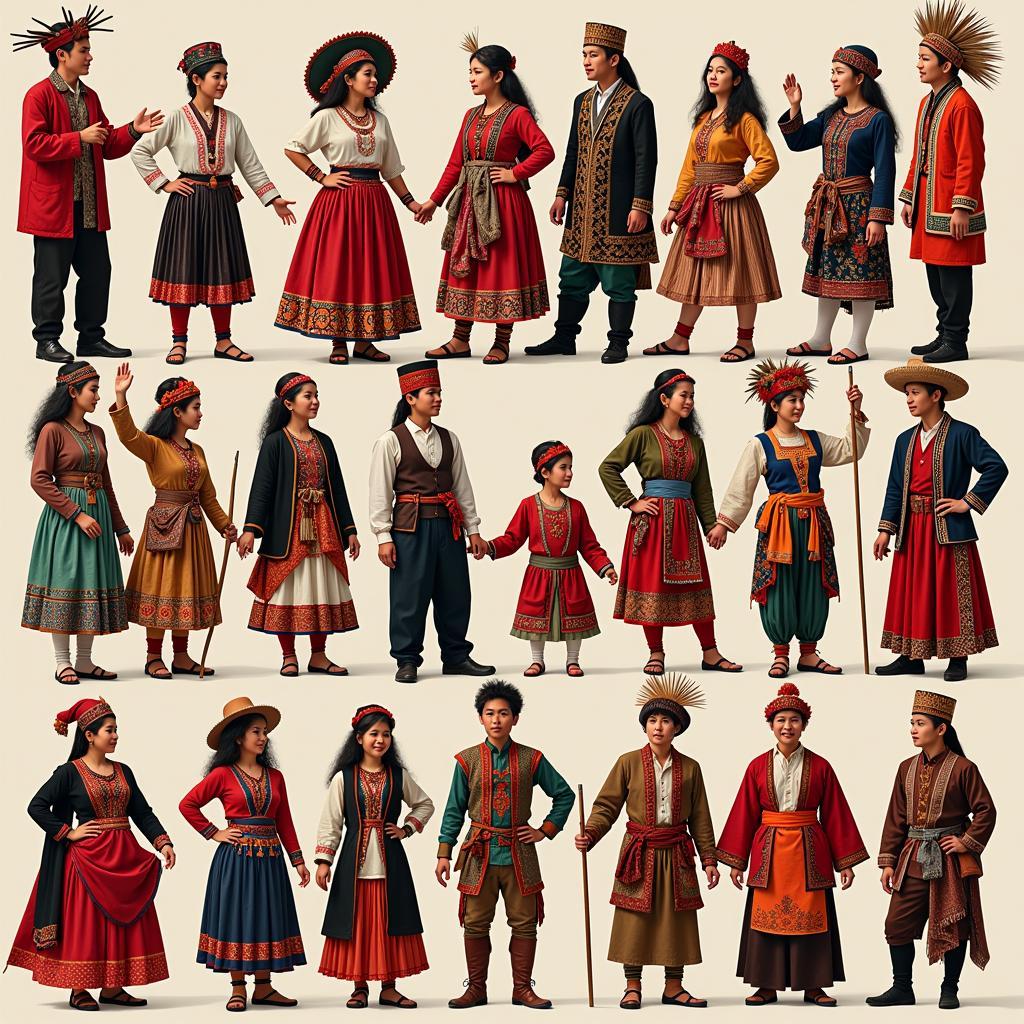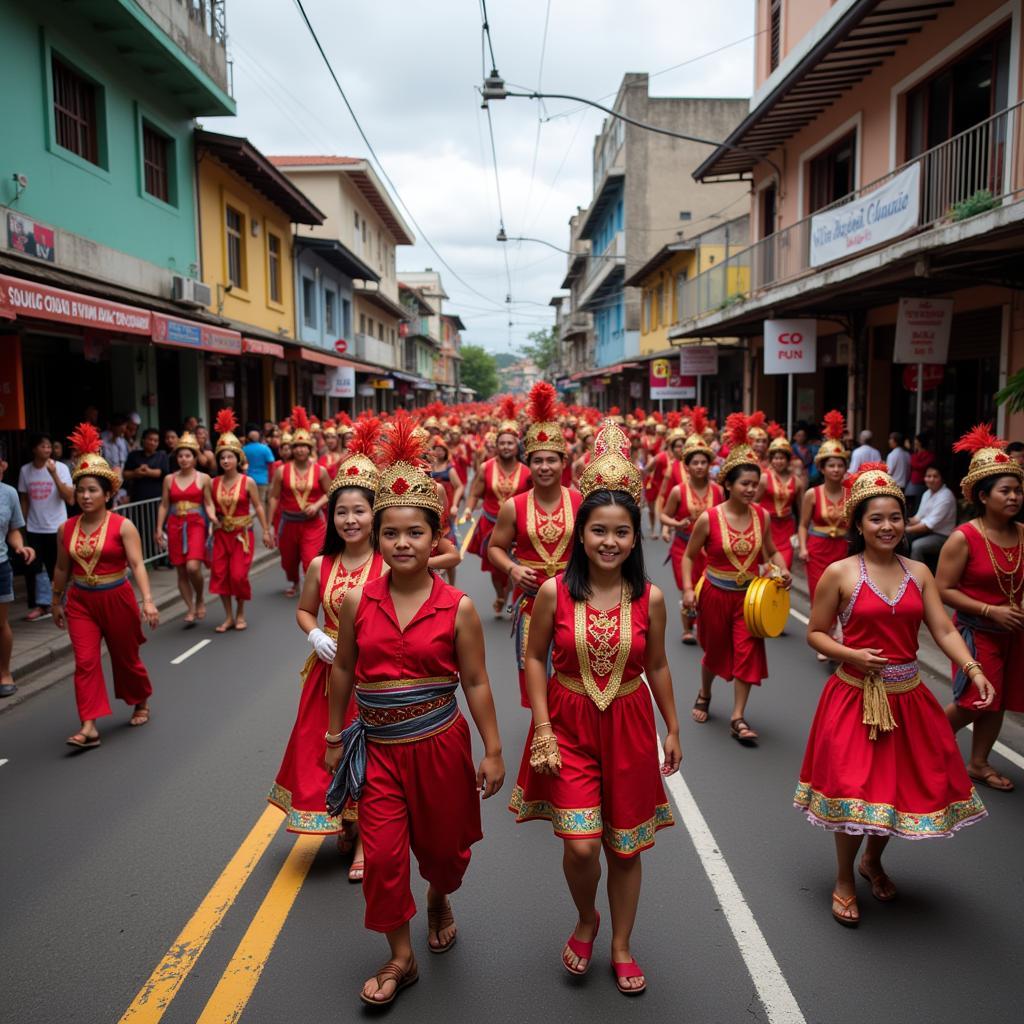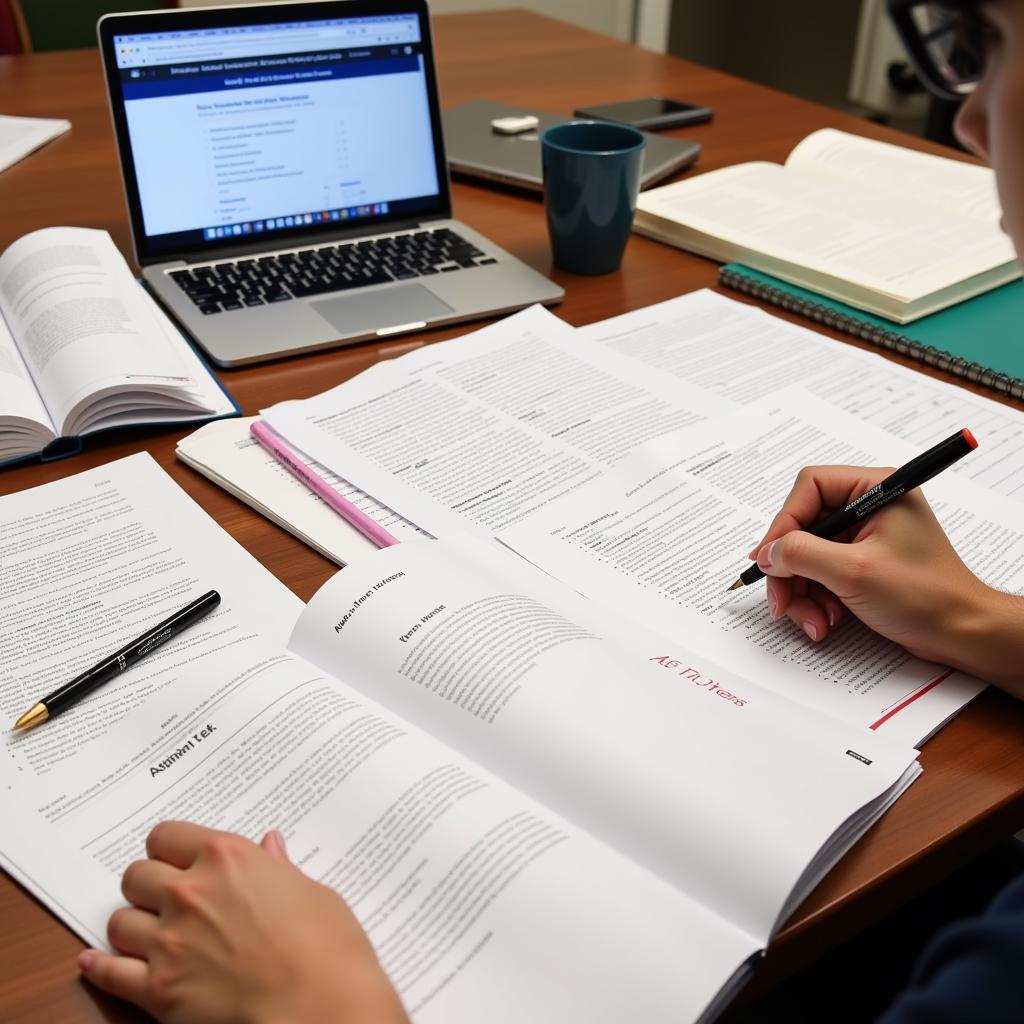The Association of Southeast Asian Nations, commonly known as ASEAN, is a political and economic union of 10 Southeast Asian countries. But Who Is In Asean exactly? This association plays a vital role in fostering cooperation and development among its members, making it a key player in the global landscape. Let’s delve into the unique identities of each ASEAN member state.
ASEAN Countries: A Tapestry of Diversity
From bustling metropolises to serene landscapes, each ASEAN member contributes to the region’s vibrant tapestry of cultures, economies, and political systems.
1. Brunei Darussalam: The Abode of Peace
Known for its opulent Sultanate and vast oil reserves, Brunei is a small but wealthy nation on the island of Borneo. Its rich cultural heritage, rooted in Malay traditions and Islamic values, makes it a unique part of the ASEAN community.
2. Cambodia: The Kingdom of Wonder
Home to the majestic Angkor Wat, Cambodia boasts a long and fascinating history. Emerging from a turbulent past, the nation is now a thriving tourist destination, known for its friendly people and captivating cultural attractions.
3. Indonesia: The Emerald Archipelago
Spanning across thousands of islands, Indonesia is the world’s largest archipelagic state. Its diverse population, breathtaking natural beauty, and rapidly growing economy make it a significant force within ASEAN and on the global stage.
 Indonesian Cultural Diversity
Indonesian Cultural Diversity
4. Laos: The Landlocked Jewel
Landlocked and mountainous, Laos offers a tranquil escape with its stunning natural beauty and laid-back charm. Known for its Buddhist temples and ancient ruins, Laos is gradually opening up to tourism while preserving its cultural heritage.
5. Malaysia: A Fusion of Cultures
Malaysia is a unique blend of Malay, Chinese, and Indian influences, evident in its cuisine, festivals, and everyday life. Its modern infrastructure, coupled with its rich biodiversity, makes it a popular destination for tourists and investors alike.
6. Myanmar: The Golden Land
Adorned with glistening pagodas and ancient temples, Myanmar, also known as Burma, is a country of immense beauty and cultural significance. Despite its political challenges, Myanmar is slowly opening up to the world, revealing its hidden gems and potential.
7. The Philippines: The Pearl of the Orient Seas
Comprising over 7,000 islands, the Philippines is a vibrant archipelago known for its warm hospitality, pristine beaches, and unique culture. Its strong historical ties to the West, coupled with its Southeast Asian roots, create a fascinating cultural blend.
 Philippines Festival Celebration
Philippines Festival Celebration
8. Singapore: The Lion City
A global financial hub and technological powerhouse, Singapore is a testament to urban planning and economic success. Its diverse population, multicultural heritage, and efficient infrastructure make it one of the most liveable cities in the world.
9. Thailand: The Land of Smiles
Renowned for its beautiful temples, tropical beaches, and delicious cuisine, Thailand is a popular tourist destination. Its rich cultural heritage, deeply rooted in Buddhism, and its warm hospitality make it a truly captivating country.
10. Vietnam: The Ascending Dragon
Emerging as a dynamic economy, Vietnam is known for its breathtaking landscapes, ancient history, and resilient people. From the bustling streets of Hanoi to the serene rice paddies of the Mekong Delta, Vietnam offers a diverse and captivating experience.
What Binds ASEAN Together?
Despite their differences, these 10 nations are united by a shared goal of economic growth, regional stability, and improved living standards for their citizens. ASEAN serves as a platform for collaboration, dialogue, and cooperation on issues of common interest.
ASEAN’s Global Significance
As a collective, ASEAN holds a strategic position in the global arena. The region’s economic growth, abundant resources, and young population make it an attractive partner for international trade and investment.
Exploring ASEAN Further
Interested in learning more about the intriguing dynamics of ASEAN?
- Discover insights into the ASE Singapore Pte Ltd CEO and their role in fostering regional collaboration.
- Explore the vision of the ASEA founder and the organization’s impact on Southeast Asia.
- Dive into a comprehensive AirAsia ASEAN Pass 2017 review and explore the benefits of traveling within the region.
Conclusion
The question “Who is in ASEAN?” leads us to a diverse and dynamic group of nations, each contributing to the region’s unique character and global standing. From bustling economies to ancient traditions, ASEAN is a tapestry woven with threads of collaboration, resilience, and growth. As ASEAN continues to evolve, its role on the world stage is bound to become even more prominent.
FAQs about ASEAN
1. What is the main purpose of ASEAN?
ASEAN’s primary goal is to accelerate economic growth, social progress, and cultural development among its member states. It also aims to promote regional peace and stability through dialogue and cooperation.
2. What are the official languages of ASEAN?
While there is no single official language, English is widely used as the working language within ASEAN.
3. How does ASEAN benefit its member states?
ASEAN provides a platform for its members to collaborate on economic issues, promote trade, attract foreign investment, and address regional challenges collectively.
4. Can other countries join ASEAN?
While ASEAN welcomes dialogue partners and observers, full membership is open only to Southeast Asian countries that meet specific criteria.
5. Where is the ASEAN headquarters located?
The ASEAN Secretariat is located in Jakarta, Indonesia.
Need Assistance?
Contact us at:
Phone Number: 0369020373
Email: [email protected]
Address: Thon Ngoc Lien, Hiep Hoa, Bac Giang, Vietnam
Our dedicated customer support team is available 24/7 to assist you.

